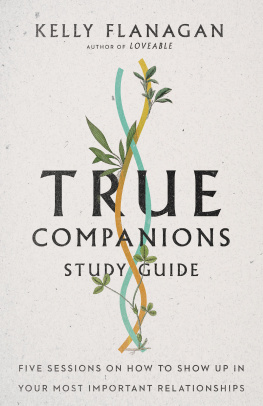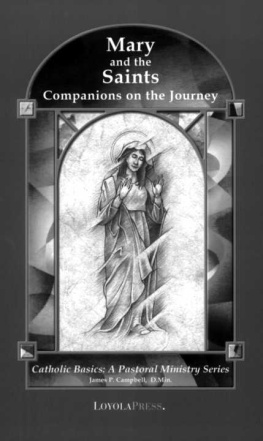Imprimi Potest:
Richard Thibodeau, C.Ss.R.
Provincial, Denver Province
The Redemptorists
Imprimatur:
Most Reverend Timothy M. Dolan
Auxiliary Bishop, Archdiocese of St. Louis
ISBN 0-7648-0911-3
2002, Liguori Publications
Printed in the United States of America
06 05 04 03 02 5 4 3 2 1
Scripture quotations are from the New Revised Standard Version of the Bible, copyright 1989 by the Division of Christian Education of the National Council of Churches of Christ in the USA. Used with permission. All rights reserved.
To order, call 1-800-325-9521
www.liguori.org
www.catholicbooksonline.com
Interior Photographs by Bill Wittman
Chuck Blankenship received an M.A. in Religious Education/Young Adult Ministry from Fordham University New York. He has worked in RCIA ministry over the last twenty-five years as director, catechist, sponsor, pastoral musician, liturgist, and RCIA Team member.
Table of Contents

W ELCOMING N EW M EMBERS INTO THE C HURCH C OMMUNITY

Adults seek membership in the Catholic Church for any number of reasons. Some look to the Church for support of their beliefs. Others come looking for meaning or just for a spiritual home they are comfortable with. Each, in his or her own way, ultimately looks to the Church for sustenance and fellowship as he or she grows in Gods own life shared with us. It is through the Rite of Christian Initiation of Adults that newcomers to the community of faith are introduced to what it means to be a Catholic. And it is through the efforts of a welcoming community, fully engaged in the process of Christian initiation, that the newcomer is washed in the waters of baptism, or formally received into the Church in the case of those who have already been baptized, and brought to the table of the community of faith.
The RCIA is a process because it is a journey that can be described in terms of periods of learning and decision making (inquiry or precatechumenate, catechumenate, purification and enlightenment, and mystagogy). This process can further be described in terms of the stages (inquirers, catechumens, the elect, neophytes) these adults pass through in their faith development. Of necessity the process must be flexible to meet the different needs of the people going through the process. An example of this flows from the fact that all Christian baptisms are valid and unrepeatable. Those seeking baptism will first become catechumens, and then the elect on their journey toward baptism. Those who have already been baptized have no need to be catechumens. They are already among the elect, so they become candidates on a journey toward reception into the Catholic Church. Yet both come seeking the knowledge necessary to commit themselves to the Church, and both are in need of welcoming support.
To the newcomer, much of the process might look like an academic exercise. After all, there is so much to learn about the Catholic Church. There are facts, creeds, theological distinctions, points of understanding, and centuries of tradition to take in. There can appear to be an almost insurmountable body of information to digest. Like any institution, the Church must explain itself and place itself in a context to be understood. So the RCIA very much resembles a classroom experiencealthough it is much more than that.
To the newcomer, the RCIA might look like a series of ceremonies, or liturgical experiences. These ceremonies, usually celebrated within the context of Sunday Mass and often marking the completion of one stage of the journey and transition to the next stage, carry a number of names: Rite of Acceptance, Rite of Election, Scrutinies, anointings, and more. The RCIA does indeed resemble a series of ceremonies and celebrationsbut it is much more than that.
Whatever the RCIA may appear to be, there is one thing that it most assuredly is: the Rite of Christian Initiation of Adults is a human experience. It is an experience of welcoming and being welcomed, of revealing and being revealed, of supporting and being supported, of joining and incorporating. The process is a means of helping an outsider to explore the Church community, while at the same time being a means of helping the Church community to come to know and appreciate the new believer who seeks to join their community.
This pamphlet focuses on the welcoming and supportive aspects of the RCIA, particularly on the importance of sponsors and on the role of the Catholic spouse of one making a journey of faith via the RCIA process. It more particularly focuses on early periods of the RCIA faith journeyinquiry and catechumenate/candidacybecause the lessons learned there carry over and are expanded upon as the journey continues.

T HE N EWCOMER TO THE C HURCH C OMMUNITY

Most of us have experienced what it is to be a newcomer. Who hasnt known what it is to be the new kid in the neighborhood, the new guy at the office, the new girl in class, or alone for the first time in a new city? Remember the tentative steps you took toward those you came in contact with? Whom could you believe? Who gave you good information, and who led you astray? What behaviors were acceptable in your new setting, and what things just werent done around there? Where did you fit in? And how were your new neighbors and peers to get to know you? How would they find out what a gift you could be, what richness you could bring to their community?
These same kinds of issues arise when the new community is a faith community, the Church. Those who are already part of the Church often take for granted the comfort of being part of the community. They may be perfectly willing to welcome newcomers, but they dont often think about what a daunting prospect the community may present to the newcomer. Even after a warm general greeting at a meeting for those wishing to find out what the RCIA is about, what often breaks the ice and opens the door for a newcomer is a compassionate, observant person who notices the newcomers hesitancy and awkwardness, who reaches out and makes the newcomer feel welcome. With a personal word of greeting a member of the community can reach out and bridge the gap between the community and the newcomer. A relationship is born. The newcomer begins to become a part of the community.
T HE S PONSOR

The role of the sponsor is key to the experience of someone thinking of joining the Church because the sponsor is very often that first personal link between the inquirer and the parish community. For this reason it is important that a sponsor be found for each inquirer as early as possible in the period of inquiry or precatechumenate, the time when people are learning enough general information about the Church so as to be able to decide to move on and enter the formation program that will lead to baptism (catechumenate) or to full reception into the Church (candidacy).The sponsor may or may not be someone who already knows the inquirer. The sponsor may be a friend, a neighbor, an in-law, or even a spouse. In many cases, the sponsor is a person from the Church community who has volunteered to serve in that capacity. It is important that the sponsor be someone already known to the Church communitya member of the communitywho is willing and able to represent, for the inquirer, the whole community of the Church.
Next page











